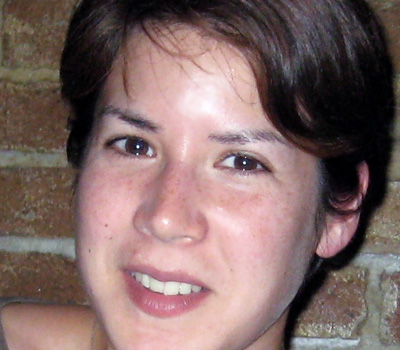Crafting more sustainable, efficient, and affordable energy sources
It is estimated that by the year 2088, we will have depleted fossil fuels as a source of energy. Therefore, it is clear that developing an alternative renewable source of energy is crucial for the future of our society. One area scientists have focused upon is crafting ways to use solar energy as a replacement for fossil fuels. Dr. Christine Luscombe, of the University of Washington, is developing printable inks that can be used to make solar cells. By developing materials to enable renewable energy, Dr. Luscombe is able to follow her passions for applying what she knows with tools that can help society. While solar energy is an extremely promising replacement for fossil fuels, large area deployment has been limited because of the high costs associated with making the devices. If Dr. Luscombe's research is successful in finding a way to print solar cells, similarly to the way newspapers are printed, the way we get energy could be revolutionized.
Dr. Luscombe and her team are trying to produce polymers that can be dissolved in solvents to create the inks. Specifically, she is trying to make semiconducting polymers that can absorb the light and also conduct charges. Creating a printable solar cell can be a challenge for a variety of reasons including, cost, efficiency, and environmental sustainability. Her research is unique because of her holistic focus on finding solutions for alternative energy sources. Therefore, her solutions look at the big picture; trying to make the most efficient solar cell, concentrating on the development of materials and devices, and working on creating more environmentally friendly solutions. In short, Dr. Luscombe's research is a promising step towards independence from fossil fuels and a cleaner environment for our future!
Current research includes:
-
Working to make polymers in a more controlled way to address issues including, the defects that polymers contain which reduce their electronic properties and understanding how to reproduce polymer's properties despite their naturally messy systems.
-
Developing chemistries to address how to synthesize polymers in an environmentally sustainable manner.
-
Dr. Luscombe and her team are able to make solar cells on a small scale (1 inch by 1 inch devices). But that's simply not practical. Dr. Luscombe is now working to address issues related to scaling up, reproducibility, and stability of the devices. In five years, she hopes to have a scalable design that would address these issues.
Bio
Christine Luscombe was born and grew up in Kobe, Japan. After receiving her first degree in Natural Sciences (Chemistry) at Trinity College, University of Cambridge in the UK, she joined Professor Andrew Holmes' and Dr. Wilhelm Huck's groups in the Melville Laboratory for Polymer Synthesis at the University of Cambridge. In 2004, she became a postdoctoral fellow in the laboratory forProfessor Jean M. J. Frechet at the Department of Chemistry at University of California, Berkeley. She became an Assistant Professor at the Materials Science and Engineering Department at the University of Washington, Seattle in 2006, and was promoted to Associate Professor in 2011. Her research ranges from small molecule to polymer synthesis and is directed towards the design, synthesis, and applications of functional macromolecules. Current topics of research include semiconductor polymer synthesis for photovoltaic applications and for biosensors.
In her free time, Dr. Luscombe enjoys hiking, running, and long brunches on the weekends.
Website: faculty.washington.edu/luscombe
Publications
Videos
Awards
College of Engineering Junior Innovator Award
2010
Sloan Research Fellowship
2010
DARPA Young Faculty Award
2008
NSF Career Award
2008-2013


